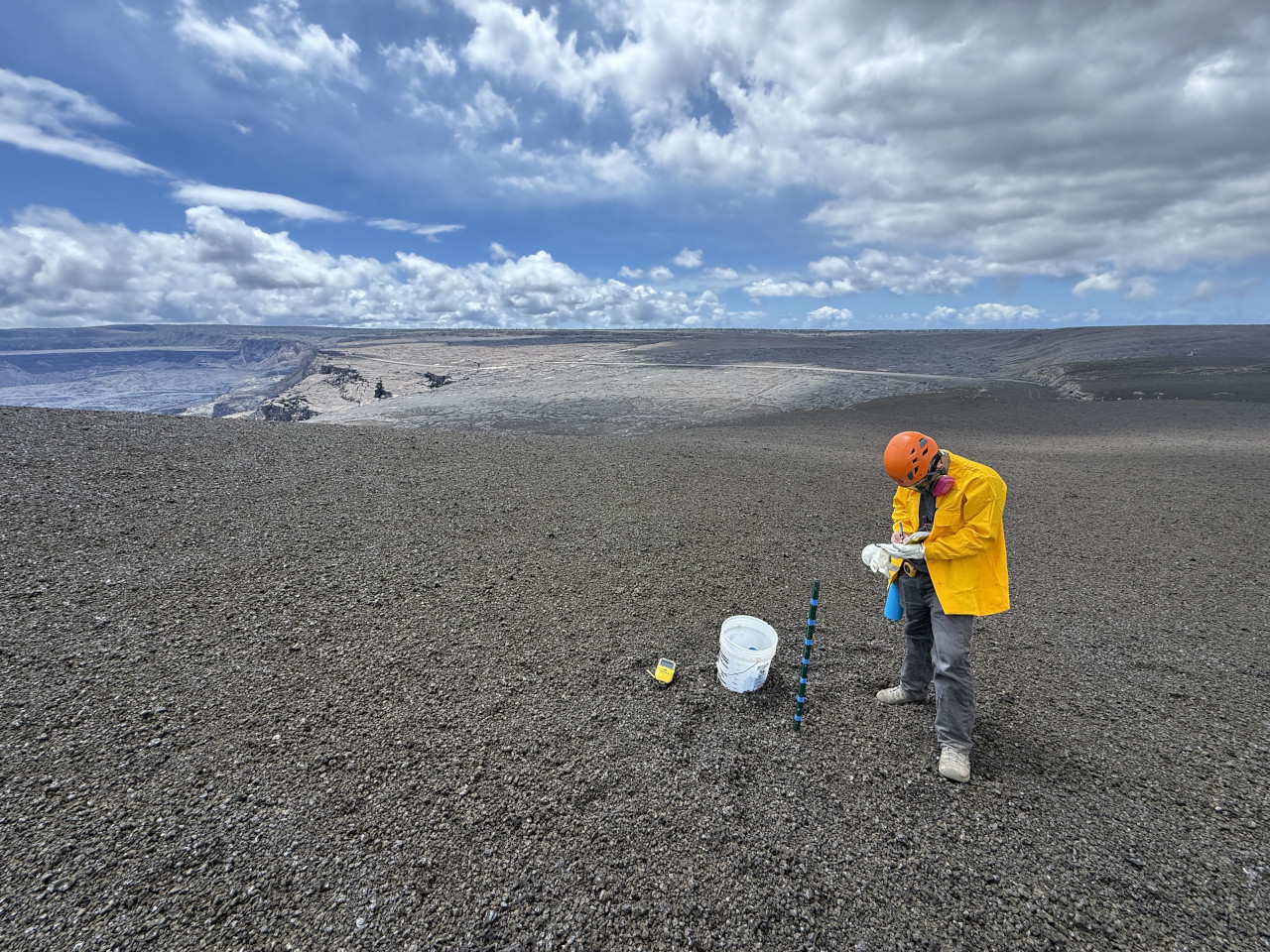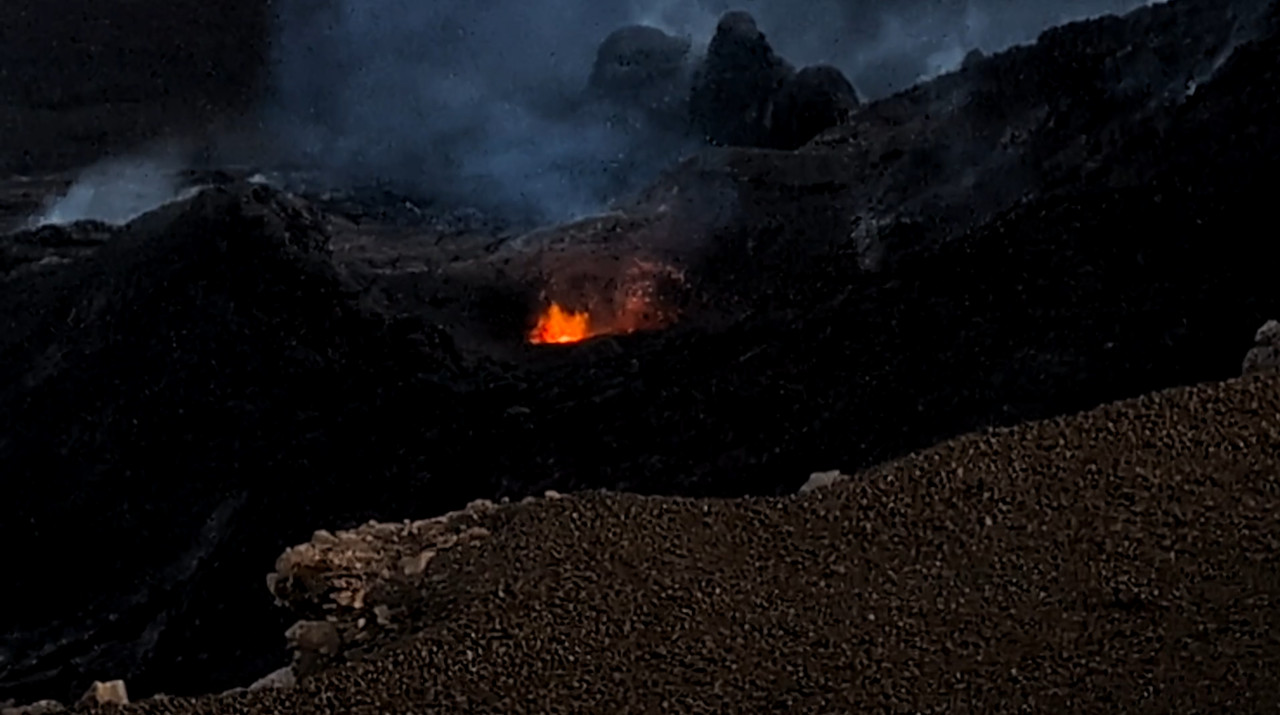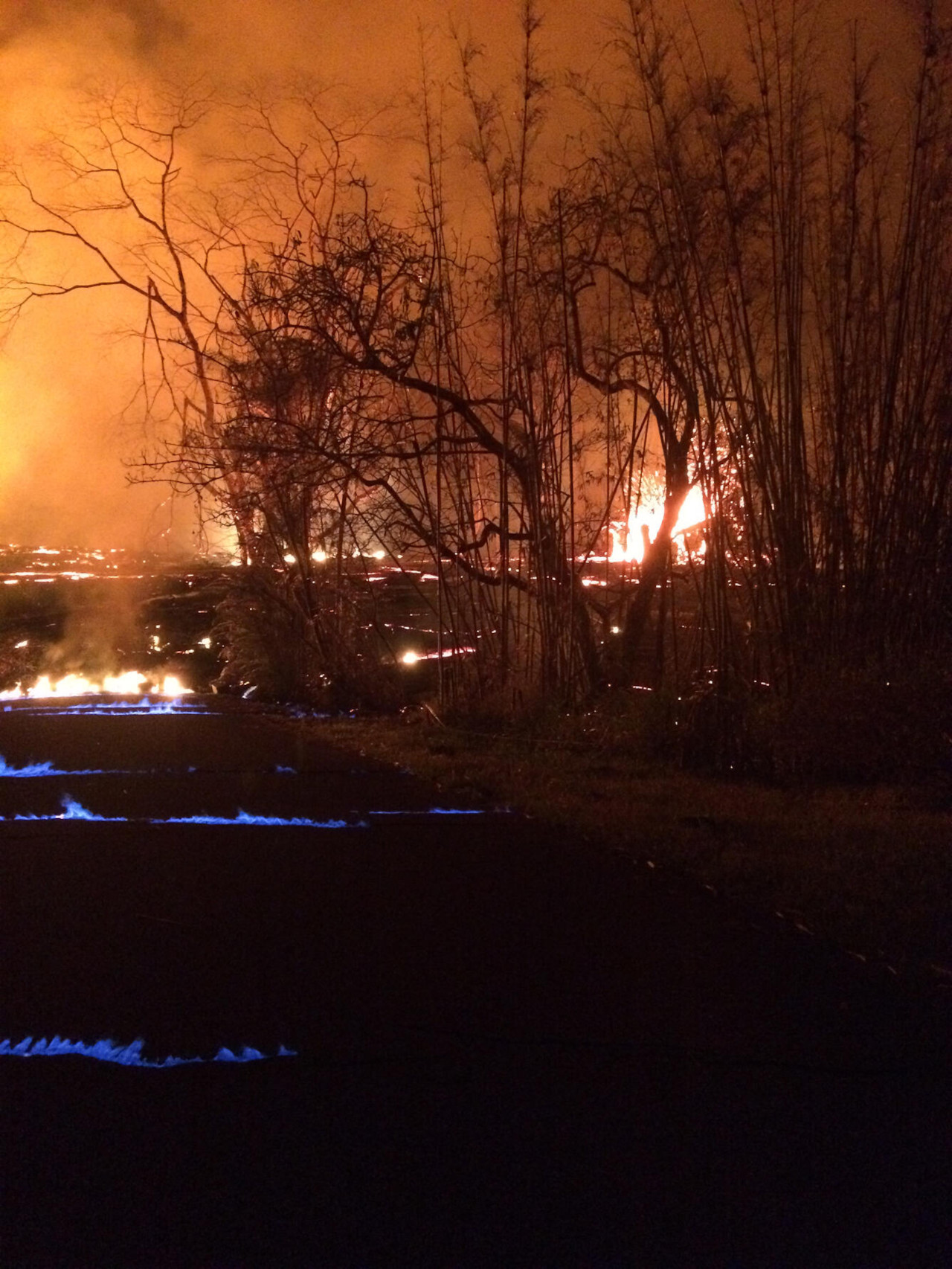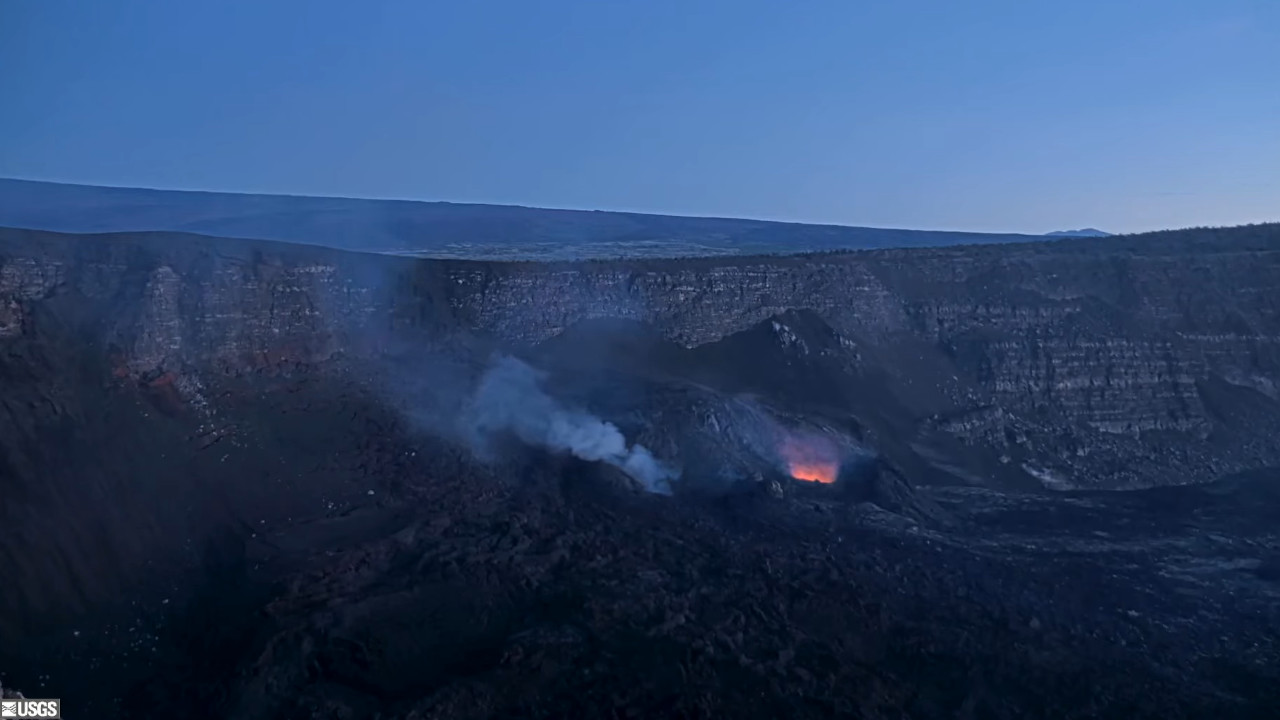(BIVN) – The ongoing eruption at the summit of Kīlauea is paused, following the end of Episode 24 on June 5th. Lava fountaining has occurred approximately once per week since the start of the eruption on December 23, 2024.
“Data analysis has confirmed that lava fountains from episode 24 reached heights of approximately 1,200 feet (365 meters), which were slightly higher than episode 23, and a new record for the current eruption,” the USGS Hawaiian Volcano Observatory wrote on Saturday. “Several yards (meters) of tephra were deposited on the southwestern rim of Kaluapele, in a closed area of Hawaiʻi Volcanoes National Park, during the high fountaining of episode 24. As much as 2 feet (60 centimeters) of tephra were deposited at a location 1.5 miles (2.4 km) southwest of the eruptive vents.”
Summit inflation has resumed, and scientists say the forecast window for episode 25 is currently between Thursday, June 12 and Sunday, June 15. The USGS Volcano Alert Level for Kīlauea is at WATCH.

USGS: “During the pause after episode 23 of the ongoing Kīlauea summit eruption, a USGS Hawaiian Volcano Observatory scientist collects data on the tephra deposits. Buckets are used to collect tephra, and emptied between episodes, to ensure that samples from each episode are isolated to track geochemical changes and determine the amount of tephra that fell at each site. The steak also helps scientists measure the thickness of tephra fall in that area.” (USGS photo taken by L. DeSmither on May 29, 2025)
In the latest Volcano Watch article, the USGS HVO writes about the dancing flames that have been observed inside the active vents during phases of precursory activity prior to sustained lava fountaining.
This week’s article is written by Mike Cappos, a gas field engineer with HVO:
During pauses between the high fountaining episodes of the ongoing Kīlauea volcano summit eruption, which began on December 23, 2024, USGS Hawaiian Volcano Observatory (HVO) scientists—and astute watchers of the HVO livestream cameras—have periodically observed yellow to orange-colored flames emanating from the two vents inside of Halemaʻumaʻu. These flames, which look most impressive at night, are the result of burning hydrogen gas.

Image of burning hydrogen above the north vent inside Halemaʻumaʻu taken during the evening of May 21, 2025. (USGS photo)
Flames of this nature have been observed in and near eruptive vents during past eruptions of Kīlauea and Mauna Loa volcanoes, and at other volcanoes around the world—often basaltic ones like ours in Hawaii. Flames were observed at Kīlauea in the early 1900s by Thomas Jaggar, the original founder of HVO, while he was observing eruptions inside Halemaʻumaʻu.
Other occurrences of flames have been observed during the 1969–1974 Maunaulu eruption, the 1986–2018 Puʻuʻōʻō eruptive era on Kīlauea’s East Rift Zone, the 2018 lower East Rift Zone eruption, the 2021–2022 Kīlauea summit eruption, and others.
Hydrogen gas is a minor constituent of volcanic gases. Water—which is made of hydrogen and oxygen—is a major component of volcanic gases, but in oxygen-poor magmas, some hydrogen that might otherwise be part of water remains as hydrogen itself in very small amounts.
How do we get flames from that hydrogen though? The temperature at which hydrogen ignites in air depends on its concentration. Generally, the higher the concentration of hydrogen present, the lower the temperature required for ignition.
One example of this was the Hindenburg airship disaster of 1937. The gas envelope of the Hindenburg was filled with pure hydrogen gas, which caught fire and exploded from only a stray spark when the airship was beginning to land, all at normal ambient temperatures in the atmosphere near the ground surface.
The low concentrations (less than 2%) of hydrogen gas present in and near volcanic vents requires significantly higher temperatures for ignition to be achieved. Hydrogen gas such low concentrations needs temperatures above about 1380°F (around 750°C). Eruptive vents at Kīlauea have temperatures in excess of 1,830°F (1,000°C), which is more than sufficient to ignite the hydrogen.
However, we believe another key player for hydrogen to be efficiently ignited at the vent is the vent geometry. In most cases, flames are observed emanating from a hornito or small spatter cone within the vent. In this sort of geometry, water-rich magmatic gas can accumulate inside the orifice and stay in an oxygen-poor state because it has not yet mixed with the oxygen-rich ambient atmosphere. The hornito or small spatter cone effectively acts as a super-hot nozzle to help induce the combustion of hydrogen, which creates the flames we have seen recently, and during earlier eruptions.
But what about blue flames? The yellow/orange hydrogen flames in volcanic vents are somewhat elusive compared to the blue flames that are commonly observed around active lava flows.

Image of burning methane (blue flames in foreground) from ground cracks taken during the 2018 lower East Rift Zone eruption of Kīlauea in Leilani Estates subdivision. (USGS photo)
Lava flows themselves typically don’t emit flames. Their broad surfaces disperse any remaining volcanic gases quickly and temperatures are too low to ignite any further diluted levels of hydrogen gas at the surface of the flow.
Blue flames that are sometimes seen around lava flows are more likely to be caused by the burning of methane gas, which is produced by the “cooking” of vegetation beneath the lava flow. This was a common observation during Kīlauea’s 2018 lower East Rift Zone eruption in the Leilani Estates subdivision. Although those dancing blue methane flames may seem beautiful… they are dangerous themselves and can even create a secondary danger. As methane gets trapped beneath the lava flow, the methane may not just burn, it may explode in and around lava flows in vegetated areas. This is a constant danger to those in close proximity to a lava flow and extreme caution must be maintained.
Volcanic flames are an interesting offshoot of volcanic degassing; their intriguing presence is an informative clue about vent or lava flow conditions. Still, they are dangerous. So, we’re happy to have our current flames mesmerizing us from a safe distance away but easy to see in HVO livestreams.


by Big Island Video News6:38 am
on at
STORY SUMMARY
HAWAIʻI VOLCANOES NATIONAL PARK - Scientists write about the hydrogen flames that have been observed dancing above active vents between fountaining episodes.